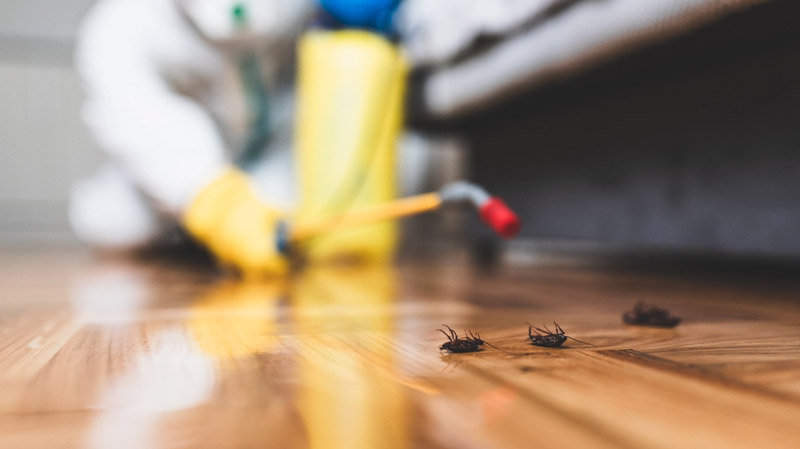Say goodbye to pests with the best Pest Control on the market.
Eco-Friendly Insect Control Approaches for Taking Care Of Wildlife in Urban Areas
Urban locations usually locate themselves at the junction of human activity and wild animals, leading to one-of-a-kind difficulties in bug administration. These techniques not only shield the environment yet additionally improve neighborhood engagement in wild animals administration. As city populaces continue to grow, recognizing the dynamics of wildlife communications comes to be increasingly important.
Understanding Urban Wild Animals Characteristics
Recognizing Urban Wild animals Dynamics is necessary for establishing effective and green bug control approaches. Urban locations are progressively becoming habitats for numerous wild animals species, driven by elements such as environment fragmentation, food accessibility, and human encroachment. Recognizing these characteristics enables for a nuanced strategy to pest administration that straightens with environmental principles.
Urban wild animals commonly includes types such as raccoons, squirrels, and birds, which adapt to city atmospheres, finding particular niches in eco-friendly spaces, parks, and even suburbs. Their existence can bring about problems with humans, particularly when they make use of personnels for food and shelter. Comprehending the behaviors and eco-friendly functions of these varieties informs methods that decrease negative communications while promoting biodiversity.
In addition, acknowledging the interdependencies within metropolitan ecological communities helps in recognizing important locations for habitat preservation and repair. This expertise adds to the development of incorporated parasite monitoring (IPM) techniques that consider the environmental balance, consequently reducing reliance on damaging chemicals. By promoting conjunction in between human beings and city wild animals, cities can create healthier environments that benefit both residents and local ecological communities, leading the way for sustainable urban living.
Natural Repellents and Deterrents
All-natural repellents and deterrents supply a lasting choice to traditional bug control techniques by using the power of nature to maintain undesirable types away. These environment-friendly options commonly make use of plant-based components, necessary oils, and various other normally happening substances that deter parasites without damaging the atmosphere.
One reliable all-natural repellent is peppermint oil, which is understood to fend off rodents and pests. Its solid scent is unpleasant to numerous pests, making it a preferred option for urban setups. In a similar way, vinegar and citrus peels can act as deterrents, as their strong odors are typically unattractive to different wild animals.
Additionally, diatomaceous earth is an all-natural powder that can be spread out in areas prone to bug task, effectively drying out and discouraging insects without posing threats to non-target types. In addition, garlic sprays and neem oil are identified for their ability to ward off a large array of insects, consisting of both insects and larger wild animals.
Implementing these natural repellents not only minimizes dependence on chemical pesticides however also advertises a healthier metropolitan ecosystem, promoting a more balanced conjunction between humans and wildlife. By utilizing these strategies, urban areas can effectively manage parasite populations while minimizing ecological influence.
Habitat Alteration Techniques
Effective habitat alteration techniques play a vital duty in lasting parasite administration by altering the atmosphere to make it much less for pest invasions. By comprehending the eco-friendly characteristics of city areas, property owners can execute critical adjustments that prevent pests while advertising biodiversity.
(Gopher Control)One main method includes maintaining correct hygiene. This includes normal waste removal, securing garbage containers, and eliminating standing water to decrease breeding sites for insects and rats. In addition, landscaping practices such as picking indigenous plants can boost environmental balance, providing habitats for advantageous microorganisms while minimizing resources for bugs.
One more vital technique is to seal entrance points in structures. Checking and repairing cracks in structures, wall surfaces, and home windows can considerably reduce bug access. In addition, producing physical obstacles, such as fences or plant barriers, can inhibit wild animals movement right into human-inhabited locations.
Integrated Parasite Monitoring Practices
Building upon environment adjustment methods, integrated pest administration (IPM) techniques provide a holistic method to controlling parasite populaces while minimizing ecological impact. IPM incorporates different strategies, consisting of organic, cultural, mechanical, and chemical controls, to accomplish effective parasite management.
Organic control involves the intro of natural predators or bloodsuckers to decrease insect populaces. Social methods, such as plant turning and hygiene, interrupt pest life cycles and lessen their environments - Pest Control. Mechanical controls, like traps and barriers, give instant remedy for pest pressures without chemical intervention
Chemical controls are utilized as a last option, concentrating on targeted applications that limit harm to non-target varieties and the atmosphere. The option of eco-friendly pesticides, when essential, is important to the IPM framework. In addition, monitoring insect populaces and examining potential damages helps educate decision-making, making sure that interventions are timely and efficient.
Area Participation and Education And Learning

(Exclusion Pest Control)Workshops and educational sessions can outfit residents with expertise concerning indigenous types, habitat conservation, and efficient non-toxic pest monitoring strategies. Partnership with institutions, local organizations, and government firms better improves academic outreach, ensuring that essential details gets to diverse audiences.
In addition, community-led campaigns, such as community clean-up days and habitat reconstruction jobs, not only promote biodiversity yet likewise strengthen neighborhood ties. Pest control service. By encouraging residents to share their experiences and monitorings, neighborhoods can develop Silverfish control Port Charlotte targeted techniques that deal with specific neighborhood parasite problems
Incorporating comments from residents right into insect monitoring prepares makes it possible for a much more responsive and flexible approach to wild animals challenges. Eventually, informed and involved communities are vital to achieving lasting success in environmentally friendly parasite control, causing much healthier metropolitan settings that appreciate both human and eco-friendly needs.

Final Thought
In conclusion, environmentally friendly pest control comes close to deal sustainable solutions for taking care of metropolitan wild animals. By prioritizing environment adjustment, utilizing all-natural repellents, and carrying out integrated parasite monitoring practices, areas can foster an unified coexistence with neighborhood fauna.